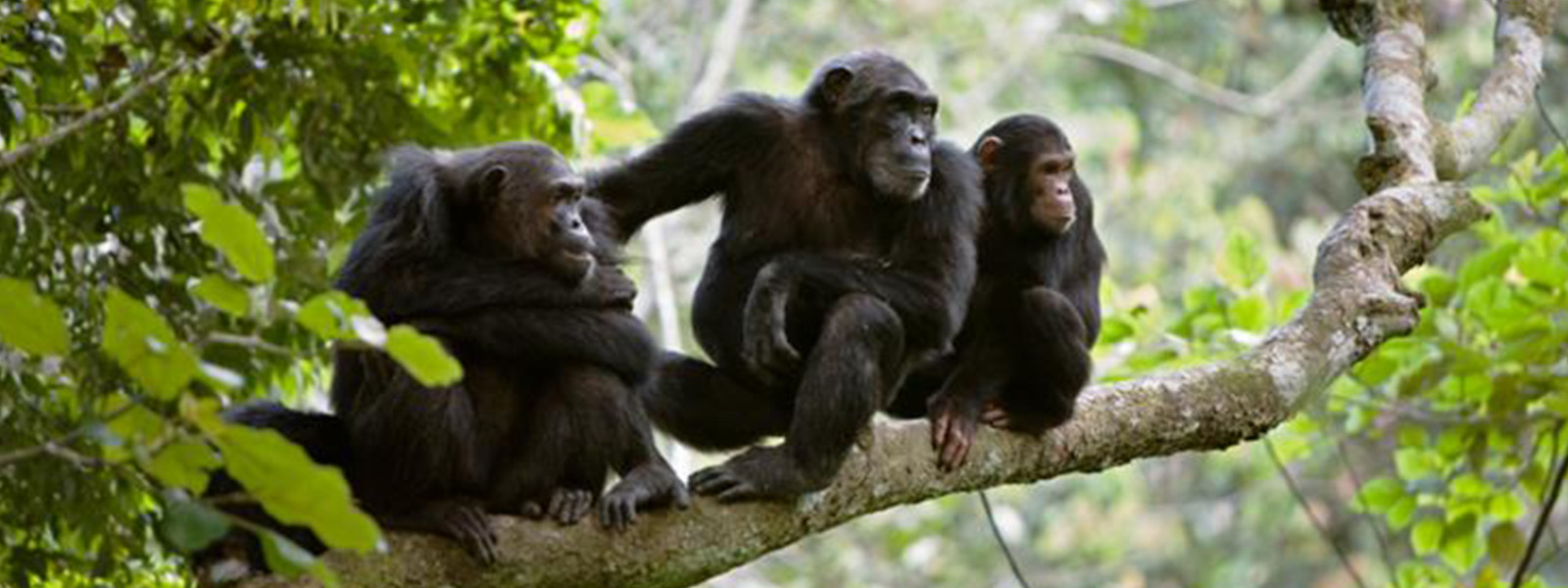Mahale Mountains National Park

About Mahale Mountains National Park
In Mahale, the chimpanzees are the star attraction. There are roughly 800 chimps in the park, of which about 60 individuals are very habituated to people. The research and habituation in Mahale is a Japanese project that goes back as long as Jane Goodall’s research in neighboring Gombe NP.
Size: 1613 km² / 623 mi²
Altitude: 757-2474 m / 2484-8117 ft
Set deep in the heart of the African interior, inaccessible by road and only 100km (60 miles) south of where Stanley uttered that immortal greeting “Doctor Livingstone, I presume”, is a scene reminiscent of an Indian Ocean island beach idyll. Silky white coves hem in the azure waters of Lake Tanganyika, overshadowed by a chain of wild, jungle-draped peaks towering almost 2km above the shore: the remote and mysterious Mahale Mountains.
Mahale Mountains is home to some of Africa’s last remaining wild chimpanzees: a population of roughly 800 (only 60 individuals forming what is known as “M group”), habituated to human visitors by a Japanese research project founded in the 1960s. Tracking the chimps of Mahale is a magical experience. The guide’s eyes pick out last night’s nests – shadowy clumps high in a gallery of trees crowding the sky. Scraps of half-eaten fruit and fresh dung become valuable clues, leading deeper into the forest. Butterflies flit in the dappled sunlight. Then suddenly you are in their midst: preening each others glossy coats in concentrated huddles, squabbling noisily, or bounding into the trees to swing effortlessly between the vines. The area is also known as Nkungwe, after the park’s largest mountain, held sacred by the local Tongwe people, and at 2,460 meters (8,069 ft) the highest of the six prominent points that make up the Mahale Range.
And while chimpanzees are the star attraction, the slopes support a diverse forest fauna, including readily observed troops of red colobus, red-tailed and blue monkeys, and a kaleidoscopic array of colorful forest birds. You can trace the Tongwe people’s ancient pilgrimage to the mountain spirits, hiking through the mountain rain-forest belt – home to an endemic race of Angola colobus monkey – to high grassy ridges chequered with alpine bamboo. Then bathe in the impossibly clear waters of the world’s longest, second-deepest and least-polluted freshwater lake – harboring an estimated 1,000 fish species – before returning as you came, by boat.
Tourist attractions
The Chimpanzees
Chain of Mountains (Mahale range)
Forest fauna and flora (Angola colobus, red colobus, red-tailed and blue monkeys, forest birds, alpine bamboo, Montain rain forest etc).
Beach along Lake Tanganyika
Local fishermen. Sun set on the Lake horizon
Forest fauna and flora (Angola colobus, red colobus, red-tailed and blue monkeys, forest birds, alpine bamboo, Montain rain forest etc).
Pros and Cons
Very exclusive and doesn’t get crowded
Pristine forest at the shore of Lake Tanganyika
A chance to come face to face with chimps, one of Africa’s big apes
The park is much bigger than Gombe; the more famous chimp park
Watching wildlife on a hike is a nice change from vehicle safaris
Wildlife
Mahale’s chimps are the main attraction, but the park supports a diverse forest fauna, including readily observed troops of red colobus, red-tailed and blue monkeys, and many colorful forest birds.
Scenery
The park is a chain of wild, jungle-draped peaks towering almost 2km above the shore of the azure water of Lake Tanganyika. The lake is fringed by white sandy beaches.
Tourism Activities:
- Mahale Mountains National Park has activities that give visitors opportunities to enjoy its beauty. The Park will give opportunities to do Chimp trekking, Walking safari, Boat cruising, Sport fishing and Mountain hiking.
- Other tourism activities offered by the park includes camping safaris, (wilderness and fly camping along the beaches), snorkeling, diving, kayaking and bird watching.
Best time to visit:
- The dry season is from May to October and is the best time to visit and for forest walks.
- The short rains in November –December do not impose a problem for visiting.
- Tented camps only open in Dry Seasons.
- Dry season: from mid-May till mid-October.
- Rainy season from mid-October until mid-May.
Getting there:
The park can be accessed throughout the year by road, water and air.
- Road: From Kigoma town the park can be accessed by road 128km (5hrs drive) south, the road running south-east of Lake Tanganyika shore
- Air: Using charted flight (Zantas air, Coastal aviation, Air Excel and safari air link) from all major cities and towns
- Water: Also can be reached by ship (9-10hrs cruise) via Lake Tanganyika to Lagosa point and then by using boat with 30 minutes cruise to the park. Also there is a public transport at Rukoma village or Mgambo village where you can hire a local boat or arrange with park for boat pick up, or public transport to Park Headquarter
Properties:
Private Owned Properties
- There are two operating luxury tented camp namely, GREYSTOKE CAMP with a capacity of 14 beds and is the oldest camp in the Park, owned by Nomad Tanzania Limited and KUNGWE BEACH PERMANENT CAMP with a capacity of 20 beds owned by Kigoma Hilltop Lodges and Safaris
Park owned facilities
- Tanapa Bandas - There are five self-contained tourist bandas, each having two rooms with twin beds capable of accommodating four people. Kitchen facilities and cooking utensils are available.